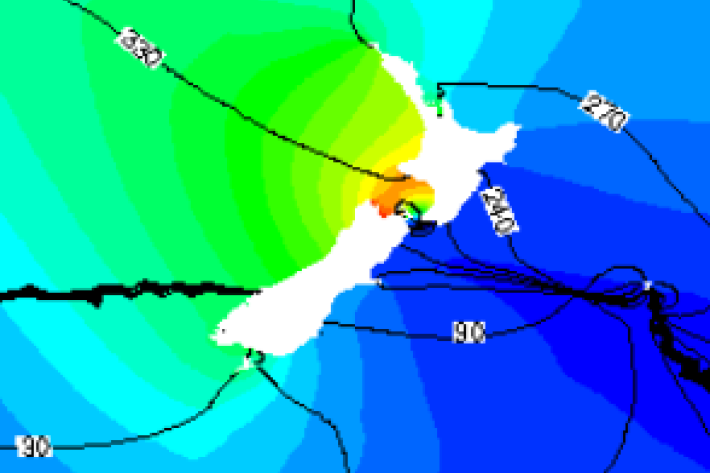-

Background on traditional and modern use of tau koura
Tau koura was the favourite traditional fishing method for harvesting lake koura and involved resting bundles of bracken fern fronds on the lake bed for koura to take refuge in and then retrieving the bundles into a canoe to harvest the koura. -

Monitoring koura
New Zealand lakes and ponds often have large populations of koura or freshwater crayfish. -

Help
How to use this key
Running the key
Install the Lucid Player
This key has been built with the Lucid Builder and you need the Lucid Player installed on your computer to be able to use the key. The standard edition is a free download from LucidCentral. Please use version 2.2 or later – there are some problems with earlier versions that will affect the usability of this key.
Download the key
Once you have the Player installed, you will need to get a copy of the key you wish to play. -

Help
How to use this key Running the key
Install the Lucid Player This key has been built with the Lucid Builder and you need the Lucid Player installed on your computer to be able to use the key. The standard edition is a free download from LucidCentral. Please use version 2.2 or later – there are some problems with earlier versions that will affect the usability of this key. Download the key Once you have the Player installed, you will need to get a copy of the key you wish to play. -

SWAT Workshop 2
Ahrens-PAH bioavailability in estuarine sediments
Ahrens-UV-enhanced PAH toxicity
Bluett-Atmospheric transport of vehicle contaminants
Clearwater-Metal uptake through aquatic foodwebs
Depree-PAH binding to stream dissolved organic matter
Depree-PAH distribution in estuarine sediments
Elliott-Urban stream hydrology
Golding-Caged invertebrate responses to stream water quality
Golding-Invertebrate uptake of fine particulate metals
Hickey-Bioaccumulation and chronic toxicity
Hickey-Habitat and stress responses
Mathieson-Zinc con -

SWAT Workshop 1
Accumulation in estuaries (Bruce)
Chemical contamination (Mike)
Insitucages (Lisa)
Invertebrate mesocosms (Chris)
Managing flows (Sandy)
Metal speciation (Kerry)
Organics in urban streams (Geoff)
Overview of SWAT programme (Mike)
PAH in NZ estuaries (Geoff)
Stream stability tools (Bob S)
Testing metal toxicity in estuaries (David)
Transport effects (Gerda)
Vegetated soil systems (Julie)
What is sustainable habitat (Mike)
Back to S.W.A.T. page -

Technical Note No. 98/7 - Power Management
Technical Note No. 98/7 - Power Management DOBIE fitted with 256k RAM data storage has two independent power supplies: a rack of 8 D-cells (Eveready alkaline No. E95, or equivalent; ~18 Ahr) mounted in the main battery compartment and a single 9V cell (Eveready alkaline No. 522, or equivalent; ~500 mAhr) mounted in a small compartment on the back of the microprocessor housing (the black box). The 9V cell is a backup supply for securing data in RAM should the main supply fail or be drained. Note that flashcard data storage is not volatile. -

Technical Note No. 98/8 - Memory Management
Technical Note No. 98/8 - Memory Management The following equations can be used to estimate memory endurance, which is the number of bursts that will fill the data memory. -

Technical Note No. 98/9 - More Wave Statistics
Technical Note No. 98/9 - More Wave Statistics If OFFLOAD.DAT contains Task 4/0 (Wave Gauge - Wave Statistics) or Task 4/1 (Wave Gauge - Wave Statistics plus Hydrostatic Depth Spectrum) data, then the PEDP can be used to recompute the "basic" wave statistics and to compute an "extended" set of wave statistics.
Core statistics include mean water depth, standard deviation of the pressure signal, mean spectral period and spectral width. DOBIE computes these internally and they are written to OFFLOAD.DAT when data are downloaded. -

Technical Note No. 98/2 - Hardware Control Options Explained: Conversion of Volts to Pressure, DOBIE Calibration, Sensor Noise
Technical Note No. 98/2 - Hardware Control Options Explained: Conversion of Volts to Pressure, DOBIE Calibration, Sensor Noise Conversion of Volts to Pressure DOBIE converts volts to pressure by:
where p is pressure in pounds per square inch, V is volts output by the pressure sensor, G is gain (units of psi/volt) and O is offset (units of psi).

